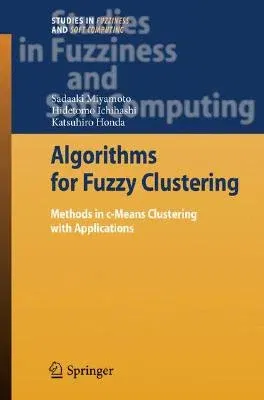Sadaaki Miyamoto
(Author)Algorithms for Fuzzy Clustering: Methods in C-Means Clustering with Applications (2008)Hardcover - 2008, 15 April 2008

Qty
1
Turbo
Ships in 2 - 3 days
In Stock
Free Delivery
Cash on Delivery
15 Days
Free Returns
Secure Checkout

Part of Series
Studies in Fuzziness and Soft Computing
Print Length
247 pages
Language
English
Publisher
Springer
Date Published
15 Apr 2008
ISBN-10
3540787364
ISBN-13
9783540787365
Description
Product Details
Book Edition:
2008
Book Format:
Hardcover
Country of Origin:
NL
Date Published:
15 April 2008
Dimensions:
23.39 x
15.6 x
1.6 cm
Genre:
Applied/Practical
ISBN-10:
3540787364
ISBN-13:
9783540787365
Language:
English
Location:
Berlin, Heidelberg
Pages:
247
Publisher:
Weight:
539.77 gm